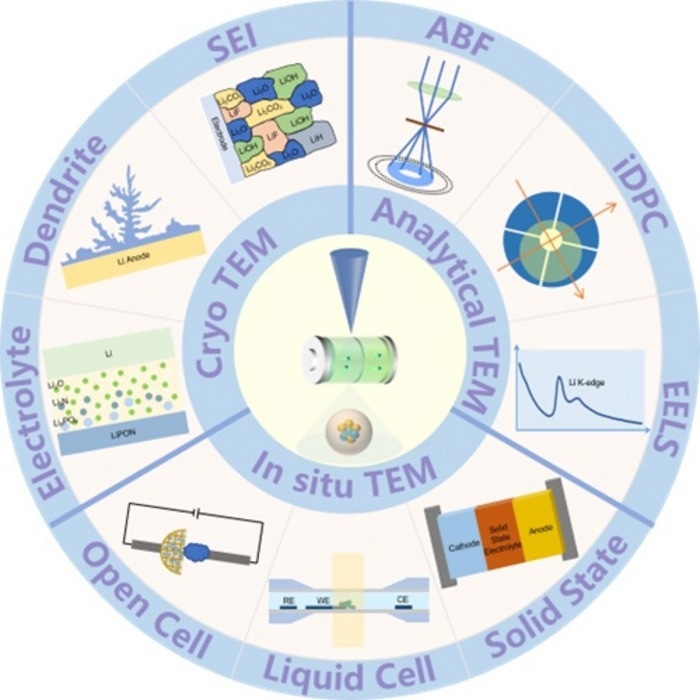Li ion imaging by transmission electron microscopy (TEM) is the “holy grail” in the investigation of Li ion battery (LIB) materials. Documenting the lithiation process in TEM can provide a deep understanding of the electrode degradation mechanism during battery cycling, which enhances material modification for improved performance. The research was guided by Prof. Dong Su (Institute of Physics, Chinese Academy of Sciences).
 Research advances in tracking lithiation by analytical TEM, cryo-TEM, and in-situ TEM. Image Credit: ©Science China Press
Research advances in tracking lithiation by analytical TEM, cryo-TEM, and in-situ TEM. Image Credit: ©Science China Press
It is now possible to detect Li ion sites inside a crystal due to recent advances in analytical TEM techniques like the Annular Bright Field (ABF) method, integrated differential phase contrast, and Ptychography. The electron energy loss spectrum can also be used to detect Li elements by recognizing their energy loss edge.
These techniques, however, are difficult for beam-sensitive specimens such as Solid Electrolyte Interphase (SEI) and Lithium dendrite, which are required for long-term cycling of LIBs. Cryo-TEM can freeze the specimen to liquid nitrogen temperature, which prevents high-energy electrons from easily damaging SEI.
Furthermore, by merging cryo-TEM and tomography methods, the three-dimensional morphology of Li dendrite could be recreated, revealing structural information that was previously hidden by two-dimensional images.
Due to the complex kinetics of electrode materials during battery cycling, it is of great importance to observe Li ion diffusion process in real-time. Last decade has witnessed many exciting results through in-situ TEM experiment, including phase transition, ion diffusion, defect evolution, and valence change.”
Dong Su, Professor, Institute of Physics, Chinese Academy of Sciences
Dong Su adds, “As conventional dry-cell set-up is used to study the variation of electrode material itself, researchers can now study the reaction between electrode and liquid electrolyte with liquid-cell technique. Combined with emerging methods, we can deeply understand the reaction process and implement the mechanism to the modification of electrode materials.”
Despite significant achievements, the constraints of these emerging methods continue to impede the research of LIB materials. For instance, explaining ABF and Ptychography images typically necessitates complex theoretical simulation. Furthermore, continuous observation of electrode materials during in-situ experimentation may cause damage to the specimen.
As a result, more efforts should be made to improve these methods. Combining techniques is one method for overcoming difficulties. For example, using a low-dose method during in-situ TEM could reduce the beam effect. Machine learning is another method for simplifying data analysis and discovering hidden property-structure correlations.
Source:
Journal reference:
Lei, X., et al. (2023). Tracking lithiation with transmission electron microscopy. Science China Chemistry. doi.org/10.1007/s11426-022-1486-1.